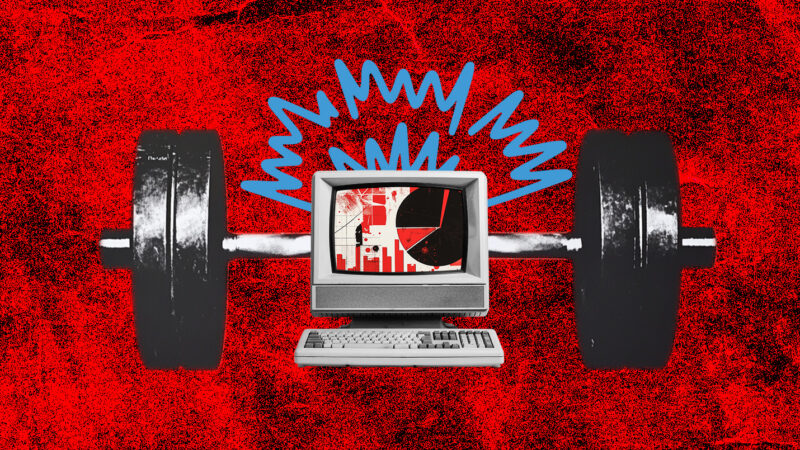27-year-olds can make or break your B2B brand. But your marketing isn’t reaching them.

If you still think of Gen Z as TikTok-dancing, vape-puffing teens, prepare to feel disorientated: in 2025, the eldest members of that cohort will turn 29. These are bona fide adults, rapidly filling up procurement, leadership and decision-making roles. And with Gen Z now comprising 27% of the UK workforce (source: Agency Inc), it’s essential to take them seriously as an audience for your B2B marketing.
Granted, these 20-somethings won’t necessarily have final sign-off on the products or services that their companies use. But, more often than not, they’re the ones tasked with researching the available options. That 52-year-old project leader isn’t going to spend hours gathering quotes on rolled steel joists. So guess who’s getting that job delegated to them…
But here’s the thing: tried-and-tested marketing tricks you’ve been using – and reusing – for the last decade or so won’t work on Gen Z.
They’re the internet-addled children of Snapchat, Roblox, “rizz”, “sus” and a million bizarre Shrek memes. They’re not going to read that glossy product brochure your business gives out at the big trade show. In fact, they’re not even going to the trade show.
But don’t feel overwhelmed. We’ve got a few pointers on how you can reach this hard-to-fathom but increasingly powerful audience. All of our assertions are backed by data, but we’ve also tripled-checked everything with Amy Brough (aged 29) – B2B account manager and our in-house Gen Z translator for this report.
Google isn’t Gen Z’s go-to for search
TikTok’s explosive growth has made it impossible to ignore – even in B2B contexts – especially for reaching Gen Z professionals. TikTok now has 24.8 million users over the age of 18 in the UK, with people aged 25–34 constituting 34% of the platform’s user base, making them its largest demographic segment (source: The Social Shepherd).
The UK’s TikTok users spend, on average, over 49 hours monthly on the platform – making them the most intensive users worldwide (source: Cropink).
But Gen Z isn’t just passively consuming content on TikTok – it’s increasingly used as their go-to search engine. “If I’m searching for a product, I’d probably look at TikTok first,” says Amy. “That’s usually more for B2C products, but if people are already looking for consumer goods on TikTok, then B2B stuff should be too. It’s about presence.”
TikTok also offers businesses an incredibly seamless sales pipeline. “With TikTok Shop, the purchase funnel is down to one click,” says Amy. “It’s so easy – you’re already in that mindset. Someone’s selling to you, it feels natural, and it goes straight from marketing to purchase. Your card’s saved, it’s instant.”
Given the often-complex customer journeys of B2B – and the fact that Gen Z won’t necessarily have final sign-off on purchases – this effortlessly one-click selling mechanism isn’t something you need to focus on. But it does highlight just how friction-free Gen Z expects their purchases to be.
Reddit is another social-as-search platform to watch, with usage surging in the UK. Reddit’s reach grew 47% year-on-year in 2024, hitting 24.6 million UK users, with 63% of 25-34-year-olds using the platform (source: Sprout Social).
Gen Z’s desire for unfiltered, authentic information makes them gravitate to Reddit’s anonymous discussion format. It’s a vast digital water cooler, and a great place for B2B brands to insert themselves – subtly and authentically – into conversations.
Gen Z is already using AI as a search engine
Beyond TikTok and Reddit, Gen Z is increasingly turning to generative AI tools – ChatGPT, Perplexity, Claude etc – to search for information. In fact, 31% of Gen Z users now say they start their searches with an AI chatbot, compared to just 20% across all age groups (source: Marketing Dive).
The appeal lies in speed and tone. Gen Z tends to ask natural, question-based queries and prefers immediate, personalised responses over a wall of blue links (source: WebFX). It’s not just about what they learn, but how it’s delivered.
That said, they’re still sceptical. While 70% of Gen Z have used generative AI tools, only 52% say they trust them to provide accurate information (source: ContentGrip). These tools are often seen as a starting point – not a final source of truth.
For B2B marketers, this means making your content machine-readable and AI-friendly is no longer optional. Here’s how you do that:
- Structure your content clearly
AI tools prioritise well-structured, semantically clear content. Use H1/H2 headings, bullet points, short paragraphs and clear formatting. If your site reads like a maze or a messy deck, it’s less likely to be understood or surfaced by AI. - Use natural, question-based language
AI models often seek answers that match how users phrase queries – usually in plain, conversational English. So create FAQ-style content and blog titles that mirror how someone might actually search, e.g. “What’s the best fire protection system for data centres?” - Make your expertise explicit
ChatGPT and similar tools pull from reliable, high-authority sources. So make your claims specific and evidenced. Include data, expert quotes and case studies. Cite reputable third parties where possible. - Optimise for source visibility
AI tools are more likely to mention companies that are mentioned elsewhere. Encourage backlinks from credible sources, publish guest articles or contribute insights to well-ranked media outlets. All of this will build your digital footprint. - Use schema markup
Add structured data (schema markup) to your web pages to help search engines (and therefore AI systems) understand your content. This includes marking up things such as product info, services, people and FAQs. - Keep key info public and ungated
If the best thing about your offer is locked behind a lead-gen form, ChatGPT won’t find it – and so neither will Gen Z. Make sure your USPs, pricing, spec sheets and standout results are easy to get at.
Video content > written content
Gen Z’s strong preference for video isn’t a lazy stereotype. It really is how they navigate almost all online content, including B2B.
“Honestly, I don’t think I’ve ever read an article out of choice,” says Amy. “I’ll skim one if I have to, but realistically, I’d prefer to learn about a brand by watching videos – and usually without sound. That’s how I consume most marketing content.”
Gen Z professionals are drawn to short-form videos they can watch without sound, often while multitasking. So don’t forget the subtitles, and keep your message single-minded and straightforward. You’re not the only thing they’re paying attention to right now.

Get to the point, very very quickly
On average, Gen-Zers have short attention spans (estimated around eight seconds for Gen Z vs 12 seconds for Millennials) (source: SheerID). While some argue the ‘8-second attention span’ is a simplification (source: McKinsey), it is clear that capturing attention quickly is critical with under-30s.
Gen Z tends to scan and scroll rapidly through content. As such, short-form videos, infographics and quick-read posts are far more likely to engage them than dense whitepapers or hour-long webinars. A study of Gen Z B2B tech buyers found that short social videos informed their decisions, and they favoured video content that got straight to the point with no fluff (source: Agency Inc).
If content doesn’t hook them immediately, they will move on. One study found Gen Z loses active attention for an online ad after just 1.3 seconds if it doesn’t resonate (source: The Drum). Better make that first second compelling as hell.
Keep videos lo-fi and believable
So yes, Gen Z loves video. But that doesn’t mean you should blow all your budget on a glossy CGI-fest. Lo-fi content – i.e. raw, semi-unscripted videos – is more effective as it blends in with the native user content on platforms such as TikTok (source: UCAS).
Amy again: “You can tell when someone’s been paid to say something. It just sounds salesy.”
Smart B2B brands are learning to relax their tone for this demographic: a bit of humour, a glimpse behind the scenes – ‘BTS’ – or a more casual social-media voice can make a brand feel more relatable and trustworthy to under‑30 buyers.
Then there’s influencer marketing – leveraging industry experts or content creators to reach B2B audiences on social platforms. If ‘influencer’ has you picturing a Kardashian, think instead of someone like Sara Dietschy, the hugely popular YouTuber and podcaster who talks tech and entrepreneurship in a very down-to-earth, Gen Z-friendly manner.
This approach is booming: 85% of B2B brands used influencer marketing in 2023, up from just 34% in 2020 (source: Market Inspector). Under‑30 buyers are especially receptive to influencers: 37% of Gen Z consumers trust social media influencers more than brands themselves (source: Lead Forensics).
‘Dark social’: the influence you can’t track
As marketers, we know when a prospect clicks a post. But we don’t know what that prospect then says about that post in their Slack or WhatsApp chats. And that’s where Gen Z decision-makers are increasingly being influenced.
An estimated 84% of content shares now happen via ‘dark social’ – channels such as private chats, email forwards and closed groups. It’s worth remembering that the UK’s biggest social platform – bigger than Instagram, TikTok, X or Facebook – is WhatsApp, with 73% of UK adults regularly using it (source: We Are Social).
These private spaces are where content is really discussed, recommended and interrogated. You can’t track it. But you can optimise for it.
Create content that’s easy to share without login walls. Equip advocates with simple explainers or standout stats. And prioritise employee advocacy and community-building.
Because if you’re not being talked about in the DMs, your brand might not exist in Gen Z’s world.
Gen Z isn’t into in-person networking
For Gen Z professionals, traditional networking events can feel awkward, inconvenient – and kind of pointless.
“I’d be kind of scared to go to a networking event, to be honest” says Amy. “Networking online feels like you can get similar results, faster, and less awkwardly.”
This matches wider trends: while older professionals may still value in-person events, younger ones are building meaningful work relationships in digital spaces. LinkedIn usage is rising fast among Gen Z, who now make 28.7% more monthly connections than Millennials. They’re more likely to slide into DMs than swap business cards.
That doesn’t mean the death of all in-person events – but it does mean expectations are different. Amy again: “If I ever went to a networking event, my attendance would have been organised and mandated by my company. It’s not the kind of thing I’d ever choose to go to, of my own volition. It’s just not fun.”
Brands should think twice before banking on footfall. Digital-first, low-pressure connections win out.
Don’t gate the finish line
Speaking of which: Gen Z expects frictionless, self-directed buying journeys – not outdated handover points. Nowadays, a form-fill and follow-up call isn’t a conversion, it’s a dropout risk.
“Filling in a form feels too intense,” says Amy. “It’s like you’re inviting someone to pressure you.” She’d much rather use a chatbot, gather information and then move at her own pace – without triggering a cascade of sales emails.
This mindset is shaping the future of B2B. Gen Z buyers are more likely to reject suppliers who don’t offer transparent, self-serve options. If they can’t find pricing, specs or real feedback upfront, they’ll move on. One study found 70% of under‑30 B2B buyers eliminate vendors before ever making contact (source: Merkle).
Give them the tools to buy or explore without roadblocks. If your site ends in a ‘get in touch’ form, it might also be the end of the conversation.
In conclusion: Gen Z is already here. And they’re not playing by ‘the rules’
If your B2B marketing still hinges on polished PDFs, phone calls and trade show brochures, you’re already behind. The next generation of buyers expects speed, transparency, authenticity and relevance – and they’ll bounce the second you don’t deliver.
The good news? You don’t have to throw out your entire strategy. But you do need to update it. Get faster. Get real. Get where these young customers actually are.
Your eight key takeaways
TikTok and Reddit are Gen Z’s search engines
Younger professionals are increasingly turning to TikTok and Reddit for product research – not Google. If you’re not showing up there, you’re not in the conversation.
Gen Z is asking AI, so make sure it knows who you are
A third of Gen Z start searches with tools like ChatGPT. If your content isn’t structured clearly, written conversationally and backed by credible sources, AI won’t find you.
Video content is essential, and it should feel native
Forget polished promos. Short, subtitled, lo-fi videos win attention and trust. They should look like they belong in a feed, not a boardroom.
Influencers aren’t just for B2C
85% of B2B brands are using influencer marketing – and Gen Z trusts people more than logos. Use that to your advantage.
Go where Gen Z go
Under-30s shun Facebook and X. Focus your energy (and budget) on the platforms they actually use: TikTok, Instagram, LinkedIn, Reddit.
Dark social drives real influence
Most content shares now happen in private. Make your content shareable, lightweight and worth talking about behind closed doors.
In-person networking isn’t the draw it once was
Gen Z prefers digital-first connections. Ditch the expectation of footfall and invest in building presence and relationships online.
Don’t gate critical info or force a sales call
70% of Gen Z B2B buyers eliminate vendors before contact. Self-serve, instant access and optional human support are the new standard.
A newsletter actually worth reading
We dislike spam as much as you do. So we promise to only grace your inbox when we’ve got something valuable to say.


